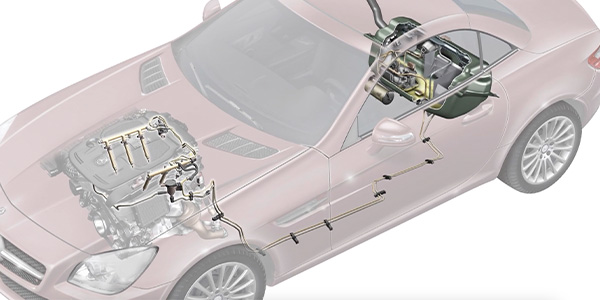Affected Vehicles:
2000 Volkswagen Jetta GLS 2.0L
2001 Audi A6 Quattro 4.2L; Beetle 2.0L; Jetta GL 2.0L, GLS 1.8L Turbo, GLS 2.0L, GLX 2.8L; Passat 1.8L, 2.8L
2002 A6 Quattro 3.0L; Beetle 2.0L; Cabrio 2.0L; Jetta GLS 2.0L; Passat 1.8L Turbo, 4 Motion 2.8L
2003 Beetle 1.8L, 2.0L; Jetta GL 2.0L, GLS 2.0L, GLS 2.8L, GLS Wagon 1.8L; Passat 1.8L Turbo
2004 Golf 2.0L, Jetta 1.8L, Jetta GLS 2.0L
2005 A4 Quattro 1.8L Turbo, Beetle 2.0L, Golf GTI 1.8L Turbo
2005-’06 Jetta 2.5 2.5L
Customer Concern: The Check Engine Light (MIL) is on with fault code P0420 (16804) stored in the fault memory.
Potential Causes: Defective catalytic converter(s)
Diagnostic Codes: 16804, 16805, 16814, 16815, P0420, P0421, P0430 or P0431
Tests/Procedures:
1. If any other fault codes are present besides catalyst (CAT) faults, the other codes must be addressed and corrected before proper/complete CAT testing can be performed.
2. VW/Audi standards on CAT fault codes is:
a. Clear the fault code and use a factory-compatible scan tool to force the readiness monitors on the vehicle.
b. If the fault code clears and the readiness monitors pass, send the vehicle on its way and when the fault code returns a second time, then replace the CAT.
c. If the fault code returns during testing or the readiness monitors for the CAT do not pass (SYS.N.OK), then replace the CAT right away.
3. By forcing all of the readiness monitors, the oxygen (O2) sensor and secondary air injection (AIR) systems are being tested as well. If the O2s fail, they need to be replaced and corrected before continuing diag.
4. Warranty on CATs is 8/80 (eight years or 80,000 miles).
5. Replacement CATs must meet the following criteria:
a. Replacement CATs must be the same dimensions as the original.
– If the CAT is too large or too small, that will affect air flow through the exhaust and can affect engine performance.
– If the CAT is too small, the exhaust may not get as clean as what the vehicle is rated for. It may be as clean as the CAT can make it but not clean enough for computer programming. This can cause the MIL to continue to illuminate.
b. Replacement CATs must meet or exceed all OE and CARB specifications.
– The majority of CATs from 2000 and on are three-way catalysts. If a two-way catalyst is installed, the exhaust may not get as clean as the vehicle is rated for. This can cause the MIL to continue to illuminate.
6. On most models, the readiness monitor can be forced with a factory- compatible scan tool in the bay without a test-drive.
a. A fax of the procedure for the specific vehicle/engine combination is available through the tech line.
7. As a general rule of thumb, there should be 150° temperature difference between the inlet and outlet of the CAT. The outlet should be hotter than the inlet.
Courtesy of Identifix.












